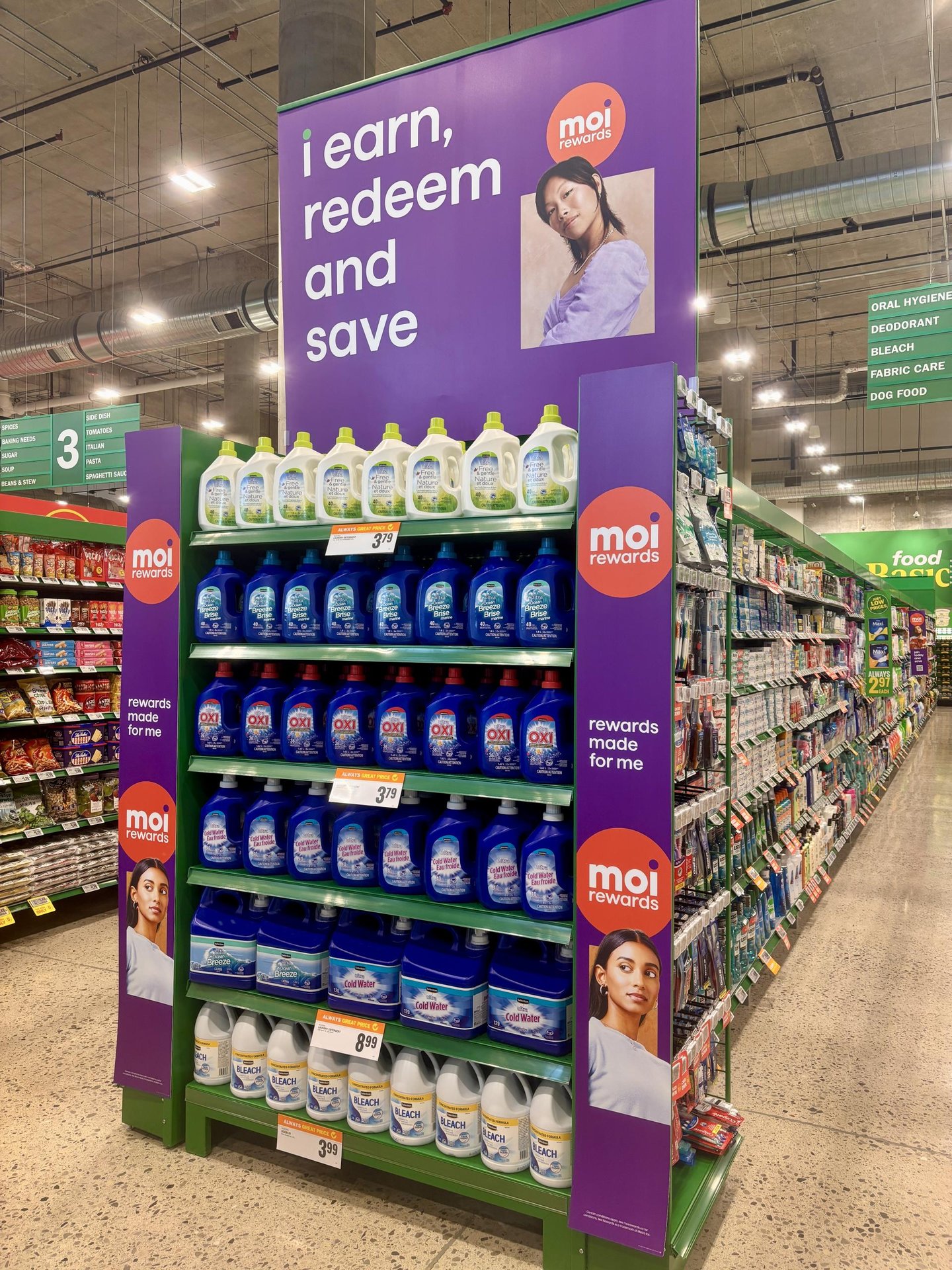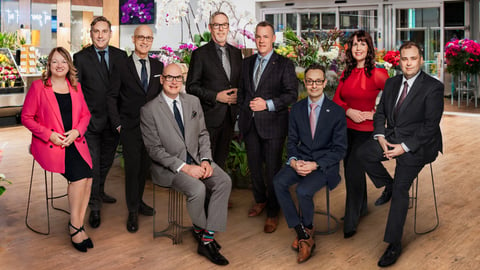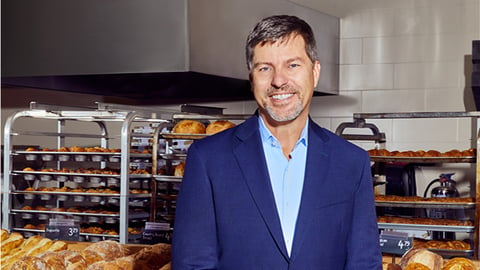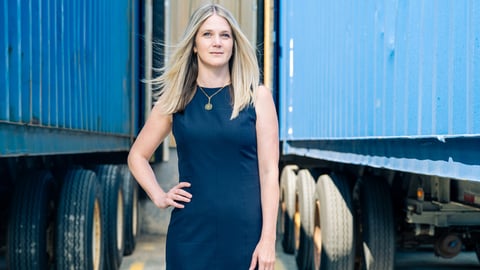Metro’s Alain Tadros on the company’s customer-first, data-driven loyalty strategy
If you spent any time in Ontario last fall, you may have caught one in a playful series of ads from Metro featuring Jennifer Lopez and Ryan Reynolds—not the celebrity versions of these people, mind you, but rather real-life Ontarians sharing the same name as the Hollywood A-listers.
“Just because I’m not that Jennifer Lopez, doesn’t matter to Moi Rewards,” says the star of one of the ads as she emerges from a Food Basics toting bags of groceries.
The television spots, created by Toronto’s Open agency, ran during the launch of Metro’s Moi Rewards program in Ontario and cleverly reinforced the message that with Moi Rewards, every customer can expect celebrity treatment.
“We thought that play on personalization was important,” says Alain Tadros, vice-president, chief marketing officer, digital strategy at Metro. Getting more personal with customers is Metro’s ambition with its latest loyalty initiative—Moi in Quebec and New Brunswick, and Moi Rewards in Ontario.
“We’re a regional retailer in three provinces, so it’s not about size, it’s not about trying to throw a bunch of money at loyalty,” says Tadros of the strategy behind Moi. “It’s making sure that we become the most personalized loyalty program in Canada.” Personalization is critical because personalization drives relevancy and relevancy drives value. “That’s where we’re going to unlock the most value for our customers—making sure that [we’re delivering] the right offer to the right customer at the right moment in the channel of their choice.”
Locking in loyalty
Loyalty is nothing new for Metro. The Montreal-based company, which boasts a network of more than 1,600 stores across grocery, pharmacy and specialty retail, has been in the loyalty game for years with various offerings that have included coalition efforts like Air Miles, local programs such as Thunder Bucks, as well as its original Metro & Moi program, which launched in 2010 at Metro locations in Quebec.
“From a value perspective, for customers, it was a very fragmented approach,” says Tadros of Metro’s previous loyalty effort. The company’s acquisition of the Quebec-based Jean Coutu pharmacy chain in 2018 prompted a rethinking of loyalty within the organization. “We looked at Jean Coutu; they had an Air Miles program as well [Metro Ontario also offered Air Miles] with declining metrics,” says Tadros, “So, we said, OK, well how do we now bring all of this together?”
READ: Behind Metro’s plan to make Moi the ‘most personalized loyalty program in Canada’
Focusing on the Quebec market first, where it had strong household penetration with its leading brands, and guided by the belief that its loyalty offer would be stronger under one program, Moi was launched in May 2023 across banners Metro, Super C, Première Moisson, and pharmacies Jean Coutu and Brunet—about 900 stores in all.
The consolidated approach received a positive response in the province; within its first few months it grew to 2.7 million loyalty members. The 2024 Leger WOW Survey ranked Moi as the most widely used loyalty program in Quebec, with 79% of Metro customers actively engaging with it. Metro knew 70% of its customers were already cross-shopping more than one of its banners, so now the opportunity to earn and redeem points across the network was a valuable proposition.
“We’re still getting tens of thousands of subscriptions in our loyalty program [in Quebec] every single week, which speaks to the relevancy of the program and how it resonates with the market,” says Tadros.
Building on the learnings and success of the Quebec program, Moi Rewards launched in Ontario last October. In addition to rolling it out to its conventional grocery stores, the program became the first-ever loyalty program for its Food Basics discount banner. The program was an instant success in the province, acquiring one million Moi Rewards members in less than three weeks of launching.
“And today, in both markets, we’re over 4.2 million active members,” says Tadros, emphasizing the word “active” and noting it’s a key metric that indicates customers are actually using or “swiping” their cards to collect and redeem points.
“We brought it under one [program], which now gives us the ability to really leverage loyalty across our banners, ensuring we’re bringing more value to our customers,” says Tadros.
Up close and personal
Personalization, an ongoing priority in loyalty strategies, is perhaps even more crucial today—a time when value-driven customers, grappling with the high-cost of living, have more choice than ever on where to shop. And today’s consumers are demanding more personal treatment from retailers. According to Canadian Grocer’s 2025 GroceryIQ Study: Taking Stock of Grocery Shopper Attitudes and Behaviours, personalized offers rank among the most valued features of grocery loyalty programs, behind reward points, exclusive discounts and cashback perks.
Metro is pursuing its ambition of becoming the most personalized loyalty program in Canada by building on long established foundations. “We’ve been doing personalization as far back as 2010,” says Tadros, noting that with the early Metro & Moi program, personalized coupons were directly mailed out to members along with rebate cheques every few months. Today, he says, Metro has the capability to send out more than one billion emails a year—with personalization embedded in each of these communications.
Personalization science has advanced to a point, Tadros explains, where loyalty data can be mined to enable Metro to meaure and track about 150 different customer attributes such as shopping frequency, basket composition, product purchase frequency, price sensitivity, lifestyle segments and coupon usage. It even provides a lens on things like whether the customer is buying Canadian products. Metro can then activate against these attributes and ensure it is targeting customers with the most relevant offers.
“It’s not Big Brother,” Tadros emphasizes, noting that data used is anonymized and doesn’t recognize individuals. “We see a number, a customer identifier that’s then anonymized and then brought into segments that we can target.”
Artificial intelligence is embedded in the tools used to analyze the data and then, based on that data, enables Metro to execute personalization on one front—the right offers in the right channels—and on the other front, Tadros says it allows the company to make better business decisions. For instance, based on this data, merchandising teams are better able to determine things such as the appropriate assortment based on what customers are buying, appropriate pricing and appropriate promotions.
The approach also allows Metro to help its CPG partners to better target customers. “Not to sell the data, but to allow them to be able to make the right offers … and use us as a media today to reach those customers,” says Tadros, adding it’s a more effective, measurable tactic than trying to reach consumers via traditional media such as television, radio or billboards that may not yield the same return on investment.
The store is at the core
Bringing Moi and Moi Rewards to life across Metro’s banners was an enormous undertaking involving almost every team in the organization. It required arduous tasks such as examining Metro’s entire tech stack, looking at consumer consents already in its system to ensure those customers were retained, and involved the development of new apps, websites and marketing campaigns to generate excitement. It necessitated educating its nearly 100,000 employees on the ins and outs of the program, especially front-end employees tasked with redeeming points and fielding customer questions about Moi.
“One thing we knew [at the start] was that in order for the program to be a success, it needed to be a success at the store,” says Tadros. “The store is our biggest media, we have millions and millions of customers walking through our stores every day, so we needed it to live at store and needed to make sure that we executed well at store.”
To ensure success on this front, merchandising and operations teams also “own” the program so it “takes life in flyers, takes life on our digital platforms and takes life in the store,” explains Tadros, adding that it’s not a program that lives on its own, like past coalition programs Metro was part of. “That’s why it’s embedded in all of our strategies.”
Moi Rewards certainly came to life at the grand opening of a Food Basics in Mississauga, Ont. in March. The store was adorned with bold Moi Rewards promotional materials—on endcaps, at the store’s entrance, at shelf—along with kiosks where customers could sign up to the program. The idea was to capture customers in the area who were new to Food Basics and to the program. By prominently featuring Moi in-store, it ensured customers “feel the program throughout the path to purchase,” says Tadros. The plan is for Moi to be frontand-centre at all new store openings.
Another tool in the box
While loyalty is important to all retailers, it’s not the be all and end all. Tadros says it’s important to think of loyalty as a tool; after all, the reality is that customers today visit many stores and purchase many brands to answer their needs. “Loyalty has to be a lever with the data and with the technology that we can use to nudge the customer a little bit more every time [to] give us, hopefully, another transaction,” explains Tadros. “And then when they’re with us, they’ll buy a little bit more because we’re offering a great store experience ... and when they’re buying online, it’s convenient.” Loyalty then functions as a facilitator, he adds, allowing Metro to maintain the relationship with its customers and keep them within its ecosystem.
Loyalty, however, must drive value for customers. One indicator of the success of Moi and Moi Rewards is that since launching, customers have redeemed more than $125 million in points—points they’ve used to buy products for their everyday needs. “That’s where loyalty becomes a lever, where it’s a lever of incremental value over and above what [customers are] currently getting,” says Tadros. “We’re going to ensure that we’re still very competitive in the market, offering good prices to our customers and fresh product and a great experience. And then over and above that, loyalty is going to help them unlock some extra value that they can then take home.”
READ: Metro recognizes community champions with Celebrate Moi campaign
Beyond value in the form of redeemable points, Metro’s loyalty strategy also offers perks such as exclusive member prices and giveaways. It has launched more than 200 contests and promotions since Moi’s debut, including a new house giveaway (worth $560,000) to one lucky Super C customer and a chance for members to become “Moillionnaires” by winning one million Moi points. The program is also linked with RBC’s Avion Rewards, offering additional benefits to cardholders. All things that provide a point of differentiation for the program, in a competitive loyalty space.
While launching Moi and Moi Rewards has been “a journey” for Metro, it’s far from complete. When asked what’s next for the program, Tadros says there’s “more to come”. More features are being developed and work continues to improve functionalities and digitization. “We’re going to continue to improve our digital capabilities over the next couple of years because I strongly believe that our customers will continue to be more digitally [engaged],” explains Tadros, adding that improved capabilities in this area will allow for even better interactions with customers.
Developing its retail media network is also part of Metro’s strategy. Although a small part of the business currently, Tadros says it is growing year over year. He adds that there’s been a lot of interest from CPGs and that joint business planning is currently taking place. “We’re building in flight and as our loyalty and digital capabilities grow, so will our retail media network,” he says. “We’re taking advantage of this whole digital revamp that we’ve done with Moi to kind of set the stage, which is going to allow us to accelerate retail media in the next couple of years.”
This article was first published in Canadian Grocer’s May 2025 issue.







